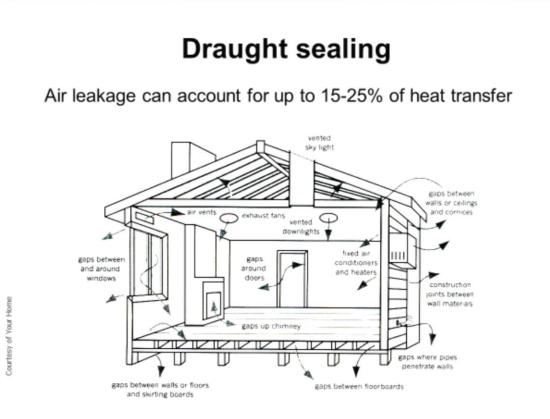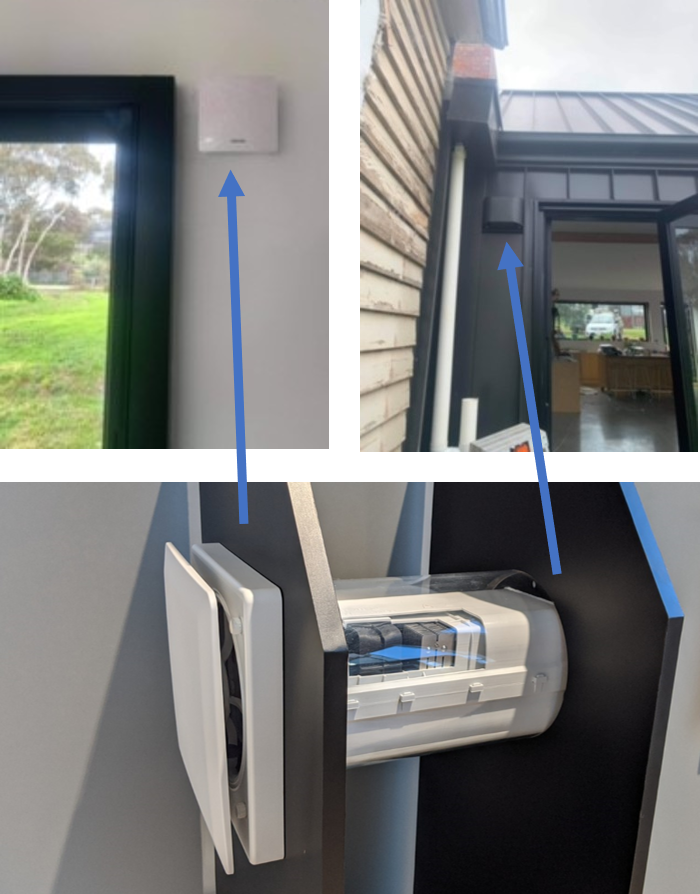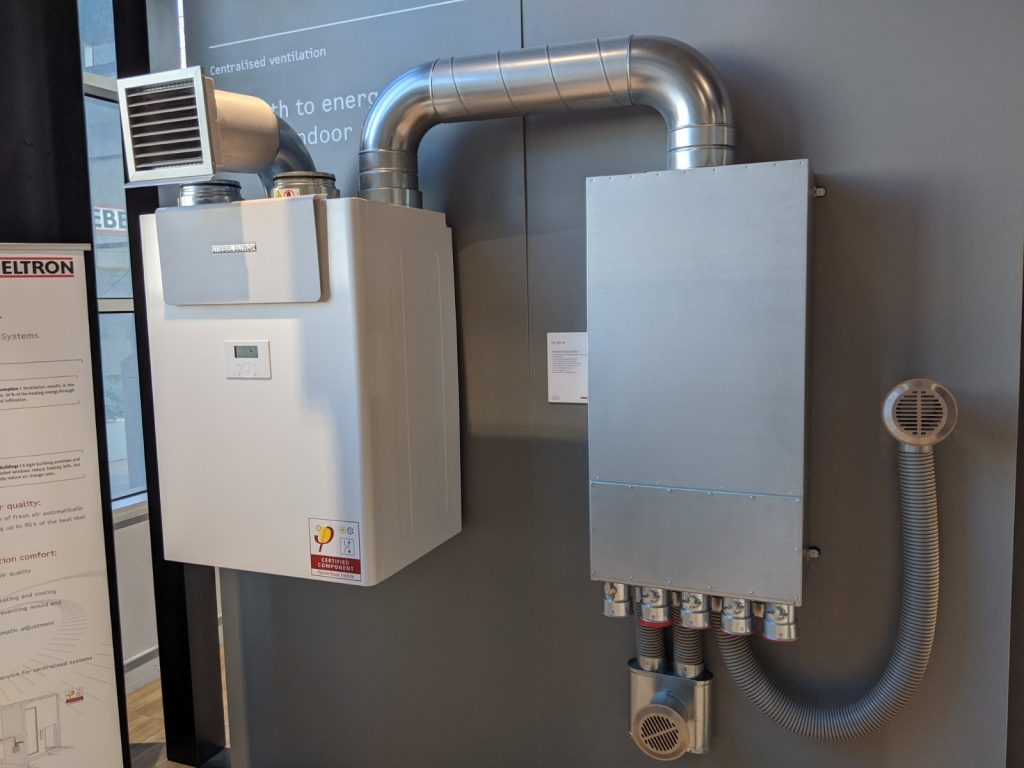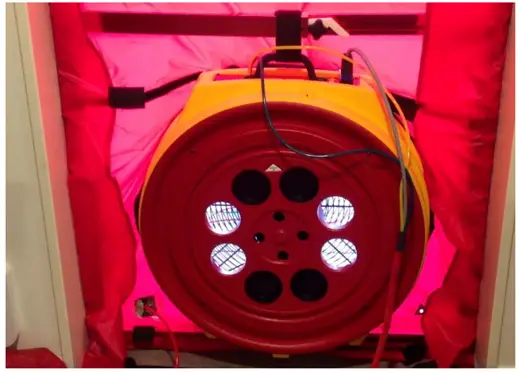
This BLOG explores issues around ventilating my airtight home.
Whilst my heating and cooling bills are much lower, I still need fresh air. With less natural ventilation coming through gaps and cracks, my options are:
- Natural ventilation from open windows
- Mechanical ventilation
With windows closed and no mechanical ventilation, I don’t want a dangerous buildup of carbon dioxide/monoxide, mould or mildew.
Natural Ventilation
Natural or passive ventilation is air flowing freely through open windows without mechanical assistance.
The rate of airflow depends essentially on pressure difference caused by:
- Temperature outside relative to inside
- The force of wind on open windows
Other factors
- The ease of airflow through open spaces
- Orientation of windows to prevailing wind
- Good window design, such as casement windows hinged vertically and opening towards prevailing wind
- Window strategy, such as opening leeside windows at least 20% more than those facing the wind to increase natural airflow
Mechanical Ventilation
There are three types of mechanical ventilators:
Supply-only
Supply-only ventilators pull in fresh air from outside and rely on open windows to displace the stale air inside. Therefore, they are normally used in warmer climates. However, they will not reduce humidity. They also reduce the effectiveness of reverse-cycle air conditioners if used at the same time.
Extract-only
Extraction fans pull stale air outside. They are commonly used in bathrooms, laundries and kitchen rangehoods. They do the opposite of supply-only ventilators by extracting stale air outside. However, this air needs to be made up with fresh air entering through open windows, cracks and gaps in your building envelope.
Balanced System
A balanced system is combination of both. It creates air pressure balance by supplying and extracting the same volume of air. These systems include heat and energy recovery systems (HRV and ERV), including de-centralised and centralised systems. They are designed to improve air quality and reduce the amount of heating and cooling needed because they transfer thermal energy from the extracted air to the supplied air. They also offer improved home security because windows can be shut.
Read more: heat recovery ventilation systems



Goldilocks Airtightness
I don’t want my home too leaky or too airtight, just right!
A house that is too leaky will be uncomfortable and cost a lot to heat and cool. A house that is too airtight could become unhealthy if not ventilated properly.
Too Leaky?
Here’s my checklist:
- Excessive heating bills in winter
- Uncomfortable winter drafts
- Uncontrolled airflow through doors and windows on windy days
- Persistent dust on furniture and sills
- Uncaulked pipework running through external walls from sinks and equipment
- Loose electrical fittings such as downlights and power outlets
- Dampers on fireplace and exhaust fans
Too Airtight?
Here’s my to-do list:
- Put weather strips on doors and windows
- Caulk up cracks and gaps
- Install self-closing exhaust fans
- Close chimney damper when not in use
- Block gaps around ducts and plumbing
- Ask an electrician to seal electrical fittings
- Buy a carbon dioxide monitor and keep levels below 1000 ppm (parts per million)
- Check for window condensation on cold nights suggesting more ventilation
Blower Door Test
A blower door test is a scientific way to measure air tightness. This test applies mechanical air pressure of 50 pascals through one open door with all windows and vents shut to measure the leakiness of your home.
This pressure approximates a strong prevailing wind through open doors and windows on one side of your home. Under this test, the air should ideally change over about 5 times in one hour.

NatHERS Star Rating Assumption
The NatHERS star rating, as at 2025, does not take account of air leakiness but rather assumes a fairly leaky home of around 10 air changes per hour under a blower door test.
This makes the resulting star rating err on the conservative side.
It is expected that air tightness will be added to the star rating methodology in future.
Read more: NatHERS Star Rating
Airtight Home Ventilation
An airtight home should have a mechanical HRV or ERV system installed. Otherwise, you are relying on opening windows when opportune to do so, when the outside air is temperate.
The promise of low energy costs will be diminished by opening windows when the outside air is less temperate.
Mechanical HRV or ERV systems also filter and purify outside air, removing dust and pollens. They also make a home more secure allowing windows to be shut and locked.
